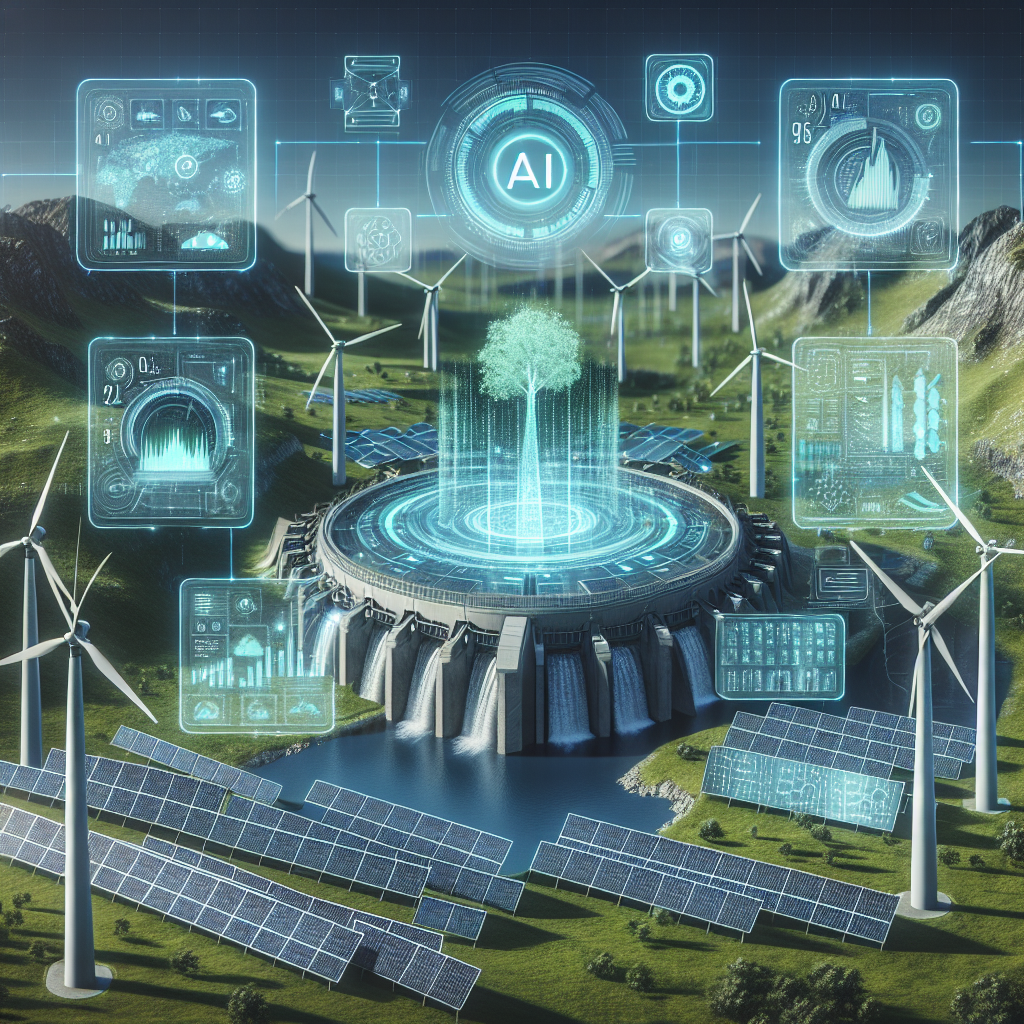In recent years, the energy sector has seen significant advancements in the application of artificial intelligence (AI) technologies to improve energy monitoring and control in renewable energy sources. AI has the potential to revolutionize the way we manage and optimize renewable energy systems, leading to increased efficiency, reduced costs, and greater sustainability.
AI applications in energy monitoring and control can help overcome some of the challenges associated with renewable energy sources, such as intermittency and variability. By using AI algorithms to analyze and predict energy production patterns, operators can better plan and optimize the use of renewable energy sources, leading to increased reliability and efficiency.
One of the key applications of AI in energy monitoring and control is predictive maintenance. By using AI algorithms to analyze data from sensors and equipment, operators can predict when maintenance is needed on renewable energy systems, such as wind turbines or solar panels. This proactive approach can help prevent costly downtime and extend the lifespan of equipment, ultimately leading to cost savings and increased reliability.
Another important application of AI in energy monitoring and control is energy forecasting. By using AI algorithms to analyze historical data and real-time information, operators can better predict energy production from renewable sources, such as wind or solar. This information can be used to optimize energy storage and distribution, leading to increased efficiency and reduced costs.
AI can also be used to optimize the operation of renewable energy systems in real-time. By using AI algorithms to analyze data from sensors and weather forecasts, operators can adjust the operation of renewable energy systems to maximize energy production and minimize costs. This dynamic approach can help operators respond to changing conditions quickly and efficiently, leading to increased profits and reduced environmental impact.
Overall, the application of AI in energy monitoring and control can help improve the efficiency, reliability, and sustainability of renewable energy systems. By using AI algorithms to analyze data and make informed decisions, operators can optimize the use of renewable energy sources and reduce their reliance on fossil fuels.
FAQs:
Q: How does AI improve energy monitoring and control in renewable energy sources?
A: AI algorithms can analyze data from sensors and equipment to predict maintenance needs, forecast energy production, and optimize the operation of renewable energy systems in real-time. This proactive approach can help increase efficiency, reduce costs, and improve sustainability.
Q: What are some examples of AI applications in energy monitoring and control?
A: Some examples include predictive maintenance, energy forecasting, and real-time optimization of renewable energy systems. These applications can help operators make informed decisions and optimize the use of renewable energy sources.
Q: How can AI help overcome the challenges associated with renewable energy sources?
A: AI algorithms can help operators better manage the intermittency and variability of renewable energy sources by analyzing data and making informed decisions. This can lead to increased reliability, efficiency, and sustainability.
Q: What are the benefits of using AI in energy monitoring and control?
A: The benefits include increased efficiency, reduced costs, improved reliability, and greater sustainability. By using AI algorithms to analyze data and make informed decisions, operators can optimize the use of renewable energy sources and reduce their reliance on fossil fuels.

